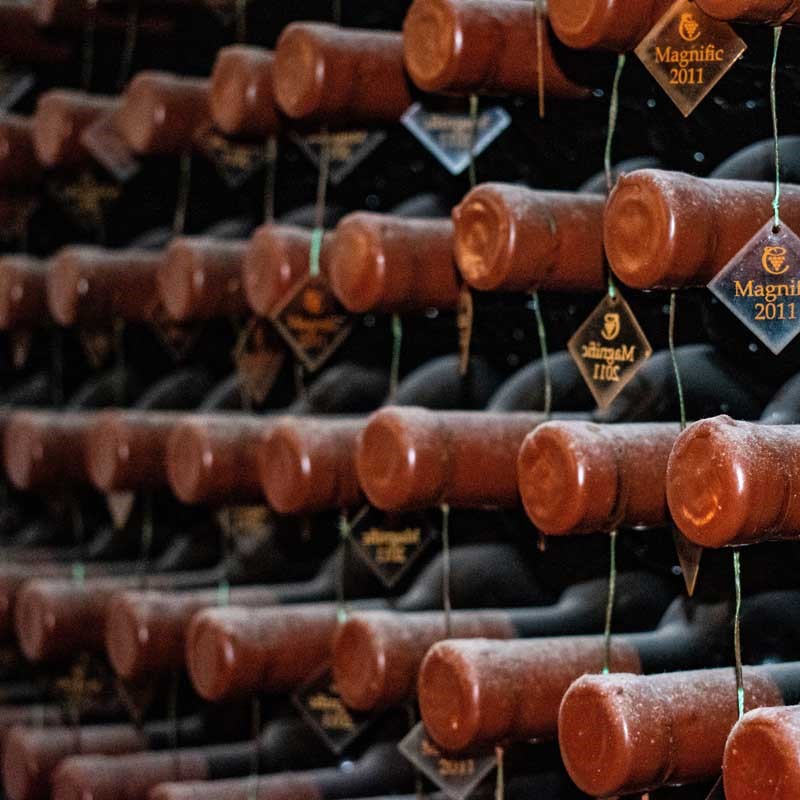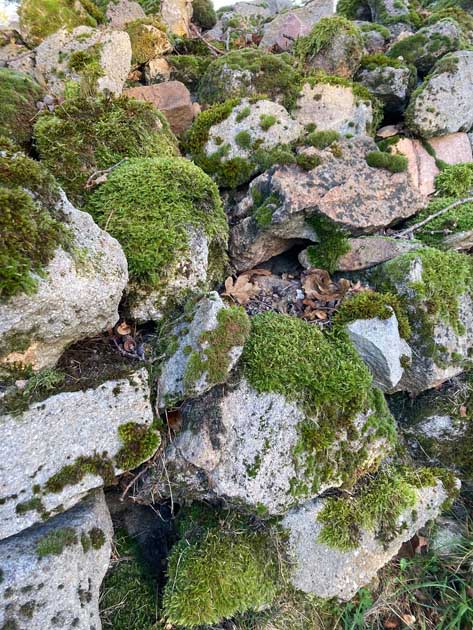The fact that wine tastes and smells different to grape juice is due to the fermentation processes that take place during the transformation of grapes, berries or grape juice into wine. Yeasts are responsible for the most important, but by no means the only fermentation process, alcoholic fermentation.
The breakdown of sugar (more precisely: sucrose, glucose and fructose) by the yeasts has a major influence on the flavour of dry wines in particular. As grape juice contains approx. 200 – 250 g/l of sugar – more than twice as much as Coca Cola – the removal of this sugar has an enormous influence on the flavour. The sugar is metabolised via pyruvic acid to ethanol and carbon dioxide, whereby the yeast gains energy. Ethanol obviously has a major influence on the aroma and flavour of the wine, as ethanol not only has an inherent odour, but also increases the molecularly dispersed solubility of hydrophobic aroma molecules, making them more accessible for retronasal aroma perception.
However, the numerous by-products of yeast metabolism are essential for the flavour profile of a wine. Two groups of flavouring substances can be distinguished according to their origin: The first are fragments of molecules released by enzymatic cleavage from molecules already present in the grapes. The second group are molecules that are synthesised by the yeasts themselves.
An important source for the first group is glycosides, which are abundant in grapes. These are a class of substances in which a generally hydrophobic aglycone is glycosidically bound to a sugar molecule. This sugar part of the glycoside is responsible for the fact that these substances have no distinct odour or taste, as it drastically lowers the vapour pressure of the glycoside. However, the aglycone alone is often a flavouring agent – monoterpenes in grapes are often glycosidically bound. Anthocyanins, for example, are glycosides in red wine whose aglycones are anthocyanidins. Other examples of aglycones are flavones, flavonols and many monoterpenes. Strong-smelling thiols such as 4-methyl-4-mercaptopentan-2-one and 3-mercapto-1-hexanol, both of which are partly responsible for the characteristic tropical fruit scent of Sauvignon Blanc, are also only released by the yeast from odourless precursors bound to cysteine. Just a few nanograms (billionths of a gram) per litre of these aromatic substances are perceptible.

C13 norisoprenoids such as bata-ionone (violets), beta-damascon (roses) or beta-damascenone (tropical fruits) are another example of flavouring substances that are produced by yeasts from grape precursors. Their grape-derived precursors are carotenoids.
However, not all flavouring substances in wine are already present in the grapes in free or chemically bound form. Yeasts are living organisms with a complex metabolism. Like all living organisms, they carry out protein biosynthesis, i.e. they produce complex protein molecules. In the central carbon metabolism, they produce ethanol and CO2 as well as flavourings such as diacetyl (nutty, buttery) or acetaldehyde (fruity in low concentrations, grassy and apple-like in higher concentrations). Even more important, however, are the secondary metabolites, as yeasts produce, for example, the molecules that make up their cell walls. Short-chain fatty acids can have a very intense odour, but even more important than aromatic substances are the esters of the fatty acids that the yeasts produce. Many esters smell of fruits such as raspberry, pineapple, peach, apricot or banana. Such fruit flavours can therefore be produced by yeasts without their synthones (larger building blocks of the molecules) already being present in the grapes. Some pure yeasts have been bred specifically for the production of certain ester-based fruit flavours. However, esters have the property of being hydrolysed in acidic or basic aqueous solutions. Wines whose fruit flavours are predominantly based on esters therefore lose their fruit relatively quickly and are not suitable for long cellar ageing. Fruit flavours based on terpenes, norisoprenoids, mercaptans or heterocycles, on the other hand, last for years and decades in the wine, which is why Sauvignon Blanc retains its tropical fruit and Riesling its citrus flavours even after long cellar ageing. interestingly, yeasts can even produce monoterpenes such as linalool (lily of the valley, lavender, coriander) or citronellol without the grape’s own precursors.

Another group of flavouring substances synthesised by yeasts originates from their amino acid metabolism. Higher alcohols are formed by yeasts via the so-called Ehrlich reaction pathway in order to excrete keto acids, which are formed during the deamination or transamination of amino acids. The resulting alpha-keto acids can be decarboxylated into flavour-intensive aldehydes. These aldehydes can either be reduced by yeasts with NADH to their alcohols or oxidised with NAD+ to the corresponding carboxylic acids. Examples of flavourings produced by yeasts in this way are isoveraldehyde (nutty-fruity), amyl alcohol (marzipan), isoamyl acetate (banana), isobutyraldehyde (apple) or phenyl acetate (floral, rose, honey). However, higher alcohols can also be produced from sugar metabolism via pyruvate and other intermediate products of alcoholic fermentation. Here too, keto acids are first decarboxylated to aldehydes and then hydrogenated to alcohol. The pleasant-smelling hexanol, on the other hand, is produced in yeast from the unsaturated long-chain fatty acids linoleic and linolenic acid.
A third aroma group is produced by autolysis (a more appetising word for decomposition) from cell components of dead yeasts, which are important during long yeast storage and can be intensified by batonnage. These autolytic notes play an important role in the flavour profile of champagne. Mannoproteins, which are part of the cell wall proteins, and lipids, which can be broken down into fatty acids and converted into aldehydes and ketones, play a role here.
So you can see that wine is by no means just grape juice with alcohol and no sugar. Yeasts make a decisive contribution to the formation of essential flavouring substances in wine. Of course, other fermentation processes, above all malolactic fermentation, and, in the case of mature wines, chemical processes in the ageing process also play a role in the wine’s flavour.





Leave A Comment